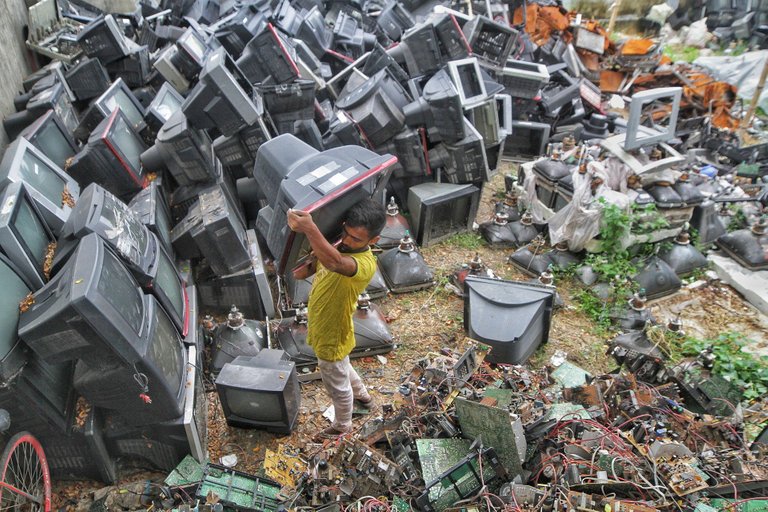“Flash” Recycling Of Heavy Metals
Specialists at flash Joule heating used the process to extract heavy metals such as gold, silver, palladium, or rhodium from old phones and notebooks. Flash recycling could change fields of e-waste into treasure chests full of heavy metals waiting for us.

Image by Maruf Rahman from Pixabay
- Be also sure to check out my other posts and follow me @kralizec and subscribe to my Youtube channel at Kralizec Gaming Youtube Channel
Electronic waste or e-waste is a currently major problem for dumps. But it is a source of resources that we tend to overlook. Now, experts from Rice University came up with an effective way that they call urban mining. This process allows us to “mine” heavy metals and rare minerals from e-waste. The solution is to flash heat them with Joule Heat – heat created by the passing of electric current.
The insatiable hunger for new electronics is likely not to end any soon. And it has turned e-waste into the fastest-growing type of waste in the world. Just in 2019 59,000,000 tons of it were created. At this time, we are recycling only about 20 % of e-waste. And the motivation to recycle could not only be an attempt to help the environment but also the possibility of getting a number of valuable resources valued at billions of dollars.
A team from Rice University led by James Tour came up with a process that should not only be easier than the methods we currently use to recycle e-waste but also less expensive. They used flash heating during which millisecond long pulses of electricity heat up material to a high temperature. The same team previously used flash heating to make graphene or even nanodiamonds from different waste materials.
In their new study, they focused on the e-waste problem. First, they grind the e-waste into powder. Then they let the electricity loose on it heating it up to 3,127° Celsius. At this temperature, the metals will actually evaporate. The vapor is then taken into a cooler where the metals condense back into their solid form. Then, you use commonly used methods to separate the metals from each other.
The researchers say that flash heating would allow us to more than 60 % of the gold and more than 80 % of silver, palladium, and rhodium from e-waste. On top of that, the method also gets rid of toxic heavy metals such as chrome, arsenic, cadmium, quicksilver, or lead. These heavy metals would contaminate the dumps otherwise. The key to the potential success of flash recycling is the fact that it is an energy effective process that can be performed at large scales. Processing one ton of material with flash recycling needs about 939 kWh of energy. Are dumps the next treasure chests for humanity?
Sources:
- If you like the content I’m producing about science maybe you will like the content I produce about gaming as well! Be sure to check out my other posts!